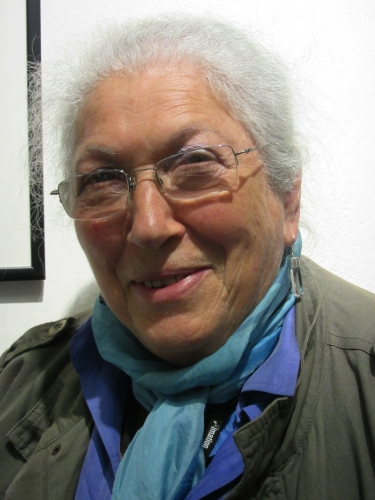 Thursday 23rd April. 2.00 p.m. for 2.30 p.m. A lecture by Jane de Sausmarez at the Market House, Castle Cary. The talk is for Members and open to any friends of BAS who wish to come. It is free to Members. Friends pay £5 on arrival.
Thursday 23rd April. 2.00 p.m. for 2.30 p.m. A lecture by Jane de Sausmarez at the Market House, Castle Cary. The talk is for Members and open to any friends of BAS who wish to come. It is free to Members. Friends pay £5 on arrival.
 We are delighted to welcome Jane de Sausmarez who is a well known author and lecturer and celebrated authority on colour. She teaches colour theory and practice in the Conservation Department of the City & Guilds of London Art School. Jane also teaches on the Fine Art Painting Courses at the Open College of the Arts (OCA).
We are delighted to welcome Jane de Sausmarez who is a well known author and lecturer and celebrated authority on colour. She teaches colour theory and practice in the Conservation Department of the City & Guilds of London Art School. Jane also teaches on the Fine Art Painting Courses at the Open College of the Arts (OCA).
She began her career teaching drawing at Hornsey College of Art, where she met her husband, Maurice de Sausmarez. For thirty-five years she taught Printed Textiles and Colour Theory in the Textile Department at Goldsmiths College and has also taught at many other art schools, including the Central School of Art and the Byam Shaw School of Art. For over ten years she has been running intensive colour workshops for both students and professionals from her home in London. Her major publication is entitled Basic Colour: A Practical Handbook
A Report on her Lecture.
As one would expect from such an experienced and distinguished art teacher, Jane gave us an extremely interesting and thought provoking lecture – fully illustrated with slides which brought out the points she was making.
Starting with the basics – how light and pigment are different in the colours they show -magenta, green and blue adding up to white in projectors and computer screens – and the yellow, red and blue in colour printing and to an extent in paints which subtract towards black, she showed us interesting examples of how the Impressionists like Renoir used the new scientific understanding of colour to bring out a vibrant richness in their work.
Taking up the topic in her subtitle – ‘understanding the deceptive’ Jane then gave several examples of how colours apparently change their values according to the other colours that surround them. She showed, for example, how the same grey tone will look dark when surrounded by white and light when surrounded by black.
She also explored how some colours are seen as being “warm” or “cold” reflecting on how these judgements can have more to do with psychology and human reactions than to scientific reality – the question of how blue can be seen being a case in point. As a ‘cold’ colour blue normally seems to recede in a picture, whereas brown, a ‘warm’ colour, comes forward. However a skilful artist can reverse this effect. This was done by Gainsborough in his ‘Blue Boy’ portrait, where the boy’s blue costume dominates the picture against a brown background. This all goes to show that the ‘rules’ of colour composition need not be obeyed slavishly, but can be used to stimulate creative innovation.
Her talk attracted around fifty, enough to pack the Market House. This being the first time we had come here for a society lecture, everyone seemed very satisfied for it certainly is an attractive venue with comfortable seats, good visibility of speaker and screen, good acoustics and enough room for the serving of a drink and a biscuit. It all added up to a successful meeting and I think we will be coming here again.
John Baxter and Will Vaughan